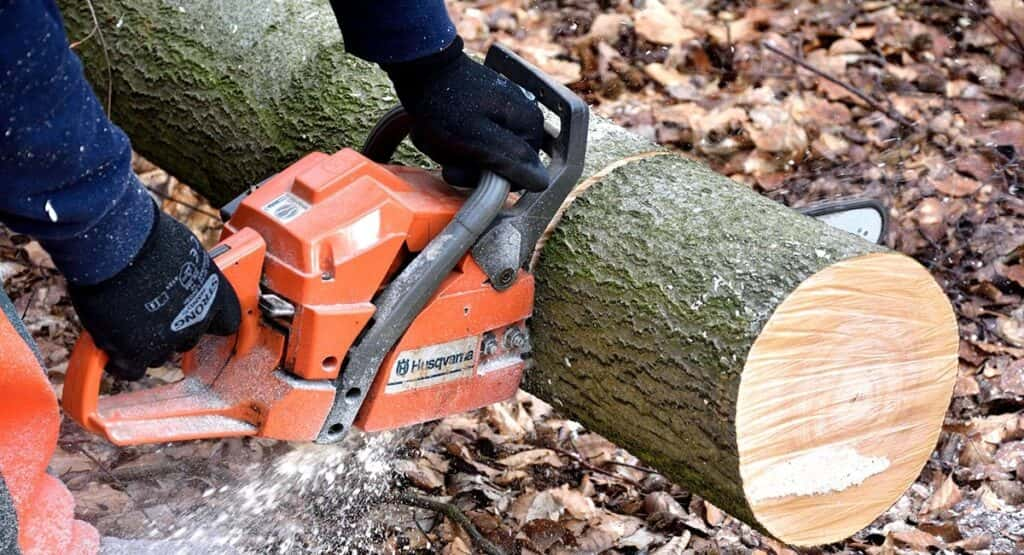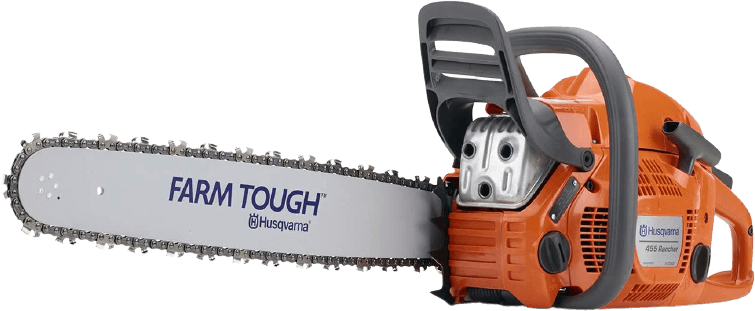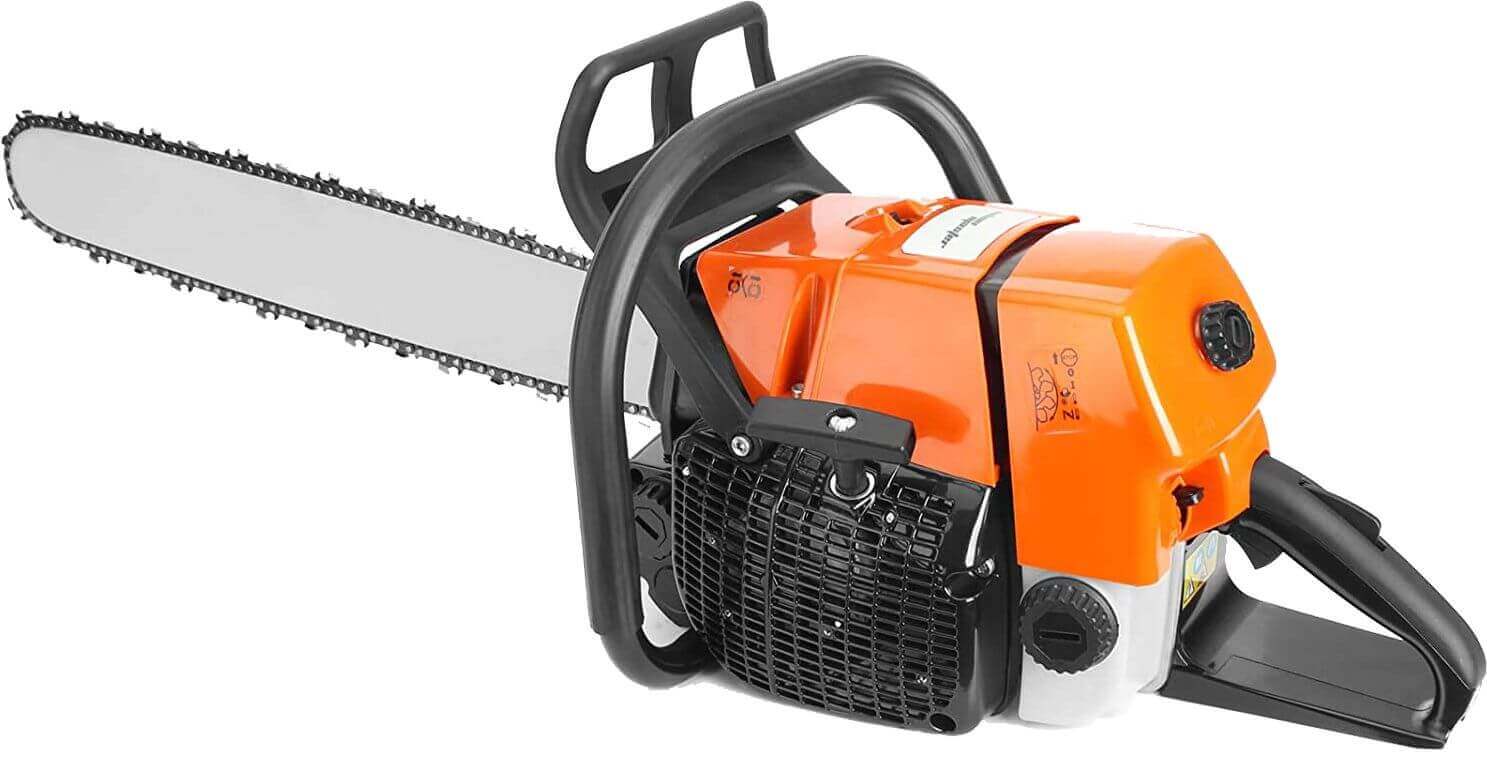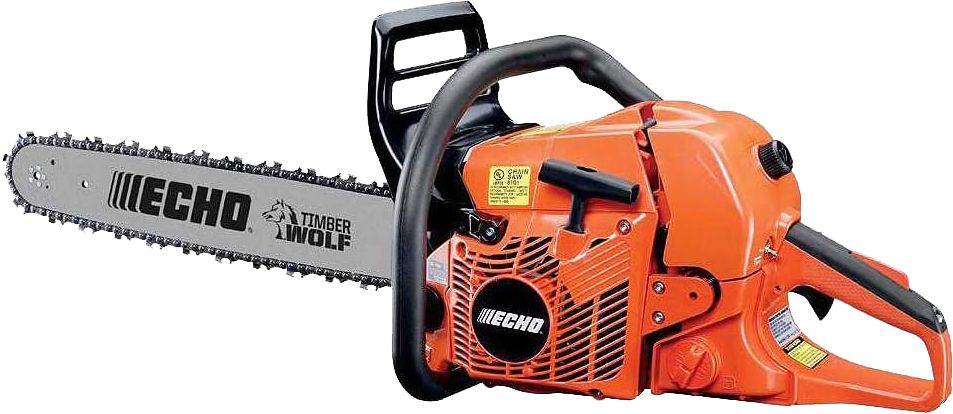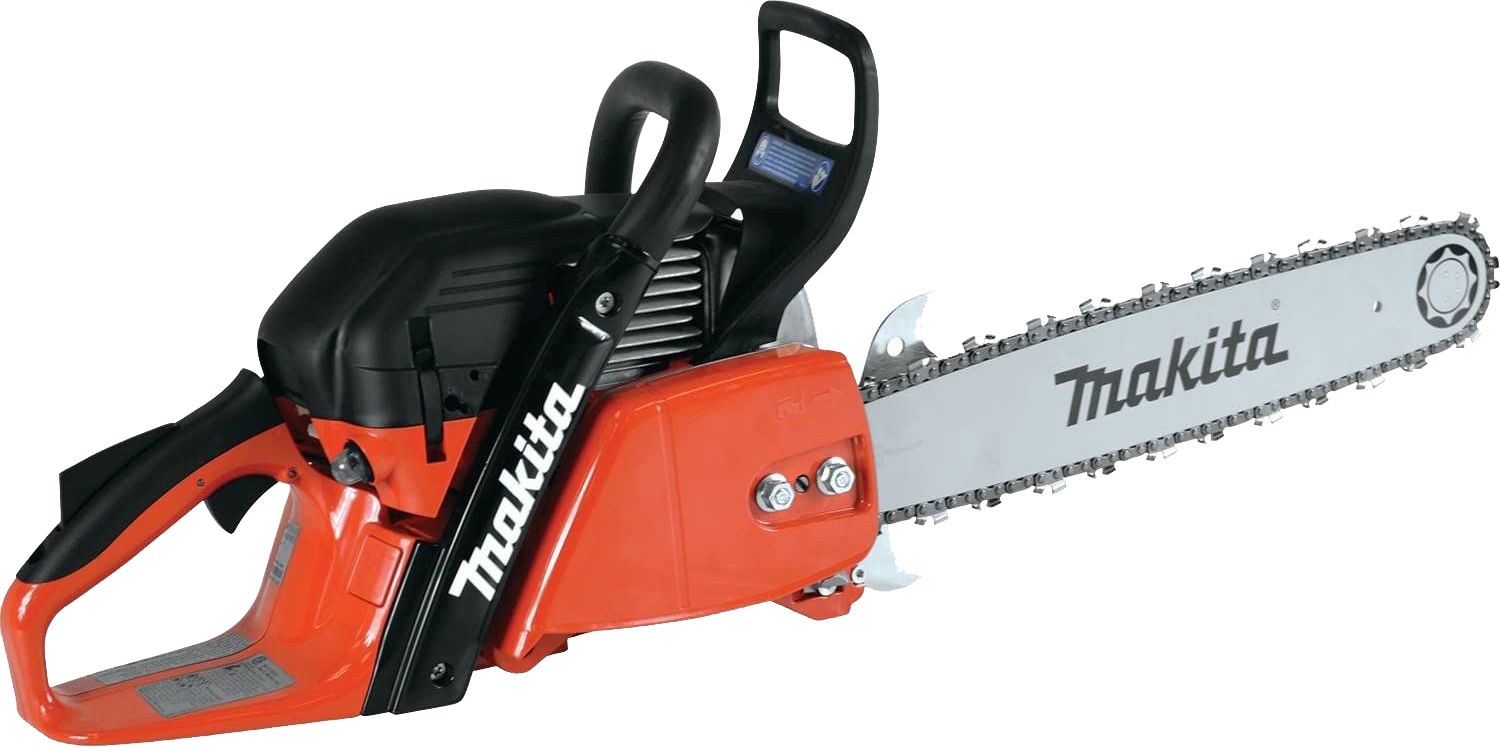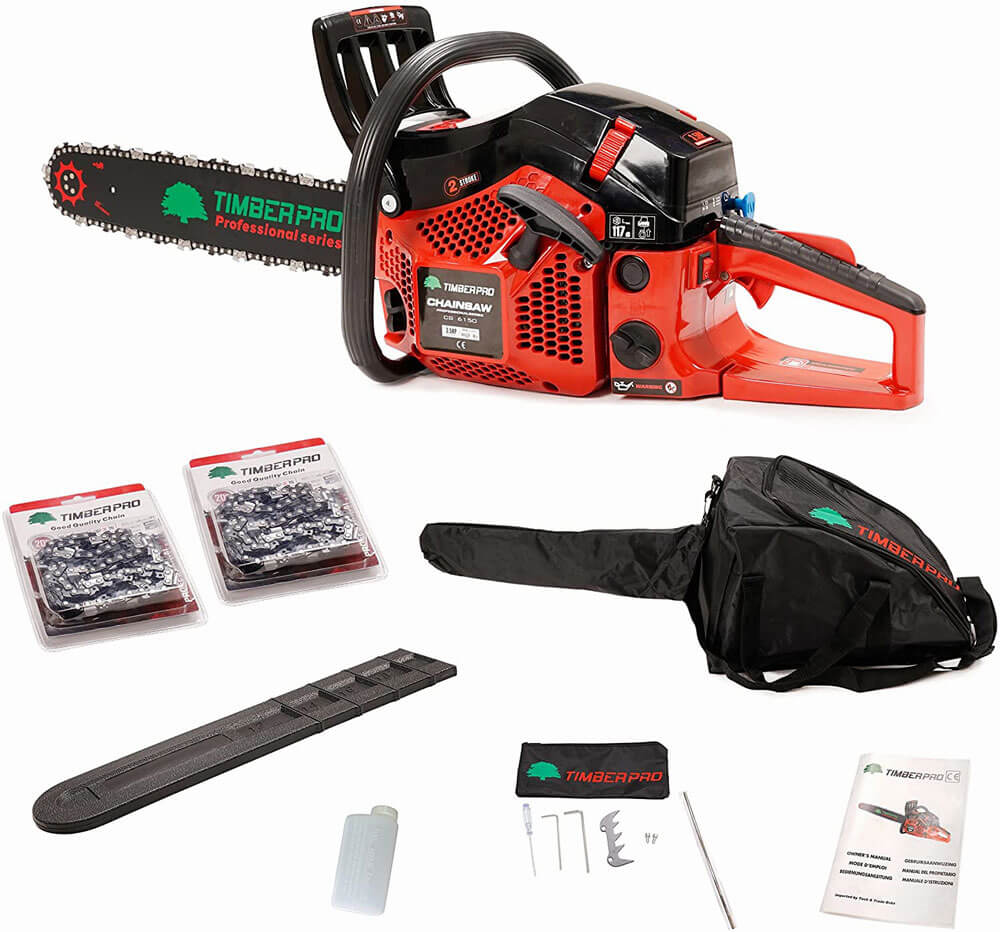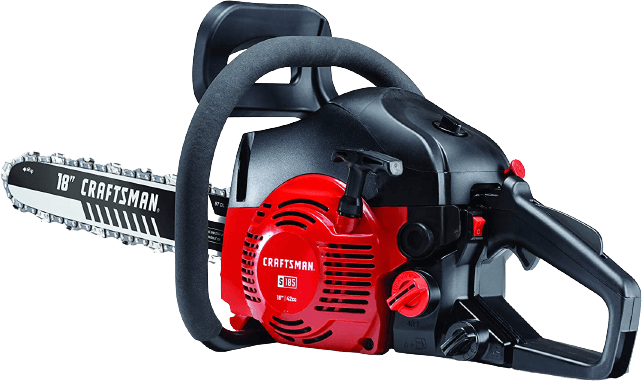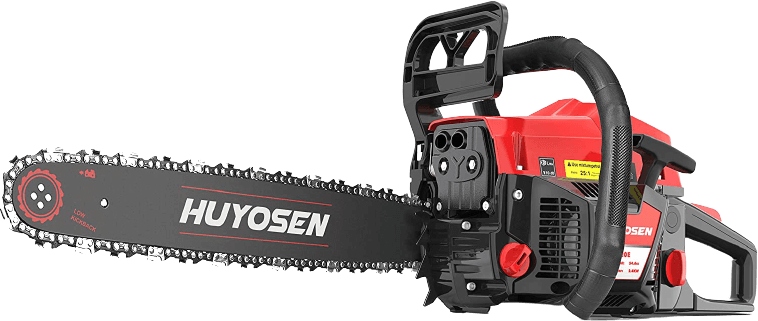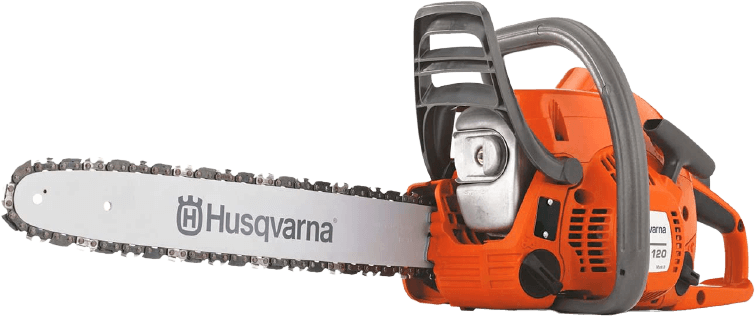While there are a lot of households that have chainsaws kept somewhere in their sheds, these chainsaws are typically only used for pruning backyards once or twice a year. For those who do tree work for a living, the quality of a professional-grade chainsaw is exactly what the job calls for.Is there really a difference between a ‘professional’ chainsaw and a regular one? What should professionals be looking for when buying a chainsaw and what are the best professional chainsaws out there?
Quick Navigation
What’s considered a ‘professional’ chainsaw?
What to consider when buying a professional chainsaw
The 8 Best Professional Chainsaws of 2021
| Chainsaw | Engine Size | Bar length | Max Speed |
|---|---|---|---|
Top pick | 55.5 cc | 20 inches | 9000 rpm |
| Salem Master Gas Powered 18-Inch 5820G Chainsaw | 58 cc | 18 inches | 8500 rpm |
ECHO 20 in. Timber Wolf 59.8 cc Gas | 59.8 cc | 20 inches | 13500 rpm |
Makita 20-Inch 61-CC Chain Saw | 61 cc | 20 inches | 13,800 rpm |
| TIMBERPRO Professional Series 62-CC Gas-Powered Chainsaw | 62 cc | 20 inches | 10800 rpm |
| Craftsman 42 CC Gas Chainsaw | 42 cc | 18 inches | 8800 rpm |
| 54.6 cc | 20 inches | 8500 rpm | |
| Husqvarna 120 Mark II 16-Inch Gas Chainsaw | 38.2 cc | 16 inches | 9000 rpm |
What’s considered a ‘professional’ chainsaw?
So far, we have been making a big deal out of selecting chainsaws that are appropriate for professional use. This begs the question – what makes a chainsaw ‘professional?’ Based on the needs of arborists and professional lumberjacks, here are the features necessary for a professional chainsaw:

Gas-powered
Electric chainsaws are great for convenience, but heavy-duty demands call for the more traditional gas-powered chainsaws. Although they are quite heavy, gas-powered chainsaws cut faster and are suitable for just about any type of tree work from pruning to cutting down large trees. How long a gas-powered chainsaw will run only depends on how much fuel you bring.

Self-lubricating
A well-lubricated chain cuts more efficiently and suffers less wear and tear. This becomes more important if you tend to use your chainsaw for long periods regularly. To eliminate the burden of having to lubricate a chain regularly, a chainsaw with a self-lubricating feature is a practical investment. It keeps your chain in good shape and is a massive quality of life improvement.

Tool-less chain adjustment
Chains could come loose or need replacement in the middle of a busy workday. When this happens, a tool-less mechanism for adjusting or replacing your chain would be a huge convenience.

Chain brake
Using a chainsaw frequently only means that there are more chances of accidents happening. For this reason, a professional chainsaw must have all the best safety features. This includes some form of anti-kickback mechanism. Just as vital is a chain brake that automatically stops the chain if a kickback happens. People who have had their lives saved by a chain brake will attest to this.

Ergonomic features
Good ergonomics is essential if you’re using a chainsaw in a professional capacity. Subtle features like a high-traction grip and anti-vibration pads can make it a lot easier to handle a chainsaw for a few hours at a time. A spring-assisted startup system would also be a huge quality of life improvement, as it will make it possible to start your gas-powered chainsaw with fewer rope pulls.
What to consider when buying a professional chainsaw
Part of being a professional is knowing the right tools for the job. If you’re a lumberjack or arborist, the quality of your chainsaw affects not only the quality of your work but also your comfort and productivity. To make sure you’re buying the right tool, here are some of the factors to consider:

Engine power
Deciding to use a gas-powered chainsaw somehow already narrows down your choice. However, you still need to how powerful you need the chainsaw to be. This is typically expressed in cc’s (cubic centimeters) or the piston displacement of the engine.If you need to cut down large trees, then we recommend an engine size of at least 50 cc. For landscaping work or firewood preparation, a slightly smaller chainsaw between 40 to 50 cc should be fine. We don’t recommend going for anything below 40 cc – these are most suitable for residential use.

Bar length
Just as important as the engine power rating is the length of the bar of a chainsaw. Most professional chainsaws can accommodate a range of bar lengths, giving you a bit of wiggle room.Again, the use case for the chainsaw needs to be considered when deciding on the bar length. Foresters and arborists who need to take down large trees will benefit from a chainsaw bar that is between 18 to 20 inches. These are suitable for felling trees. For simple landscape work or delimbing of trees, slightly smaller chainsaws with 12-inch to 16-inch bars seem more practical.

Maintenance needs
One thing we know for sure is that a professional chainsaw will see heavy use. This underscores the need for regular maintenance. Your best bet would be to get a chainsaw with features that somewhat reduce its maintenance needs. These include toolless assembly, a modular design, automatic chain lubrication, and a long-life air filtration system. The ease of maintenance of a chainsaw has a huge effect on keeping it in good shape for longer and returning more value for your investment.

Ease of use
No matter what the specs of your chainsaw are, the most important characteristic is that it’s fit for your use. This means that it’s not too heavy or too large for you. Professionals should already know this but using a chainsaw can be very tiring. Getting worn down while using your chainsaw isn’t just inefficient – it’s dangerous.There are also a few other ease-of-use factors that are subtle but important. Pay attention to how balanced the chainsaw is, how good the grip feels, or if the controls are intuitive and easily accessible. The goal should be to get a chainsaw that will make your job as easy as possible.
The 8 Best Professional Chainsaws of 2021
1) Husqvarna 20 Inch 455 Rancher Gas Chainsaw
Unsurprisingly, our top pick comes from the ever-reliable Husqvarna brand. Among their wide range of premium chainsaws, we picked the 455 Rancher for professional use for its ideal combination of sophisticated features and somewhat friendly price tag.
Headlining the accolades of this chainsaw is an impressive 55.5-cc and 3.49 HP engine. This translates to a maximum speed of 9000 rpm, which should make short work even of a large tree. Perfectly complementing this engine is support for a 20-inch bar. This chainsaw is huge and appropriately robust for heavy-duty work.More than its raw power, what we appreciate about the 455 Ranger is how smartly it was engineered. The chainsaw comes with an array of proprietary technologies including X-Torg (for lower fuel consumption), Smart Start (for easier starting), and LowVib (to reduce vibration). The air injection system keeps the air filter cleaner for longer. Should the filter need cleaning, it can be easily popped out with a quick-release mechanism.The Husqvarna 455 Rancher does NOT support tool-less chain adjustment. The consolation is that the custom “scrench” tool already comes with the chainsaw. It’s also significantly more expensive than other brands, although it’s already one of the cheaper chainsaws from Husqvarna.
Specs | Pros | Cons |
|---|---|---|
| Engine size: 55.5 cc Bar length: 20 inches Maximum speed: 9000 rpm Weight: 13.2 lbs. | Very powerful 2-cycle engineLow-vibration featuresAutomatic lubricationFuel-saving technologyEasy to start | Tools needed for chain adjustmentVery expensive |
2) Salem Master Gas Powered 18-Inch 5820G Chainsaw
The Salem Master 5820G hits just enough of the pointers needed to be a good professional chainsaw. It’s powerful, has good quality-of-life features, and is inexpensive. It’s a convenient and reliable chainsaw but lacks anything that will make it stand out.With a 58-cc engine and 8500 rpm maximum speed, the 5820G is powerful enough for felling trees. Trunks with large diameters can be a bit of a challenge because of the chainsaw’s 18-inch guide bar. In any case, doing precision work with the 5820G might be difficult because it’s quite heavy at 15.8 lbs.
Thankfully, Salem Master has focused well on the ergonomics of the 5820G. The rubber non-slip handle provides good grip and reduces vibration. Maintenance is made easier with the auto-lubrication system and tool-free air filter access for cleaning. Unfortunately, maintenance of the 5820G isn’t entirely tool-free. If you need to adjust its chain, you’re going to need both a screwdriver and a wrench. Starting the chainsaw also requires the old-fashioned method of choking fuel supply to heat up the engine.The 5820G may lack the “smarter” features of the Husqvarna chainsaws, but they also cost much lower. In terms of value for money, the Salem Master 5820G definitely offers it in spades.
Specs | Pros | Cons |
|---|---|---|
| Engine size: 58 cc Bar length: 18 inches Maximum speed: 8500 rpm Weight: 15.8 lbs. | Powerful engineInexpensiveErgonomic designAutomatic lubricationSpring-assist start system | HeavyTools needed for chain adjustment |
3) ECHO 20-Inch Timber Wolf 59.8-CC Gas Powered Chainsaw
Unsurprisingly, this 20-inch chainsaw from Echo is one of our top choices for professional chainsaws. Coming from one of the premium brands of chainsaws, the Timber Wolf delivers top-of-the-line performance for heavy-duty work. The biggest downside is that this is certainly not a budget option.
Under the hood of this chainsaw is a powerful 59.8-cc. engine that can support speeds of up to 13,500 rpm. With a 20-inch bar, the Timber Wolf will make short work of felling large trees and general lumberjack work. A clutch-driven automatic oiler reduces oil consumption while keeping the chain in good shape during use. Impressively, this is also one of the lightest gas-powered chainsaws, considering the size of its engine.One area where Echo seems to have dropped the ball is in build quality. To keep the weight-to-power ratio of the chainsaw low, it seems to have way too many plastic parts. This makes the parts prone to cracking, especially if the chainsaw is used frequently near maximum settings.
Specs | Pros | Cons |
|---|---|---|
| Engine size: 59.8 cc Bar length: 20 inches Maximum speed: 13500 rpm Weight: 13.2 lbs. | Very good vibration dampeningPowerful motorEasy-to-check fuel tankReduced oil consumptionLightweight | Plastic housing lacks durabilityExpensive |
4) Makita 20-Inch 61-CC Chain Saw
Another premium-grade professional chainsaw, the Makita 61-CC boasts of an impressive combination of power and lightweight construction. Its 61-cc engine can support a maximum speed of 13, 800 rpm and is built to handle a 20-inch guide bar. Makita achieves this exceptional weight-to-power ratio by using tough but lightweight magnesium as housing material.This Makita chainsaw is designed for easy maintenance. Its chain is kept in good shape by an auto-oiling system, a floating rim sprocket, and an easy-to-clean chain compartment. It has the usual chain brake safety feature, as well as a vibration dampening system that makes it less tiring to use for sustained periods.
Makita bypasses the usual issues with starting gas-powered chainsaws with their Easy Start spring-assisted mechanism. While it’s still not perfect (especially when starting the chainsaw in old weather), this chainsaw has significantly less negative feedback related to difficult startups.The only real drawback of this chainsaw is that it’s very expensive – possibly more than any other chainsaw on this list. While the quality certainly justifies the price, it also cannot be denied that there aren’t many people who would be willing to spend this much for a chainsaw, even for a professional-grade one.
Specs | Pros | Cons |
|---|---|---|
| Engine size: 61 cc Bar length: 20 inches Maximum speed: 13,800 rpm Weight: 13.2 lbs. | LightweightPowerfulExcellent durabilityAll-around good features | Very expensive |
5) TIMBERPRO Professional Series 62-CC Gas-Powered Chainsaw
The Timberpro Professional Series chainsaw may not be the cheapest chainsaw on this list, but this is probably the most comprehensive in terms of included tools and accessories. Everything you will need comes with the chainsaw, including a maintenance tool kit, a blade guard, and a custom carrying bag.
As for the chainsaw itself, it comes with a satisfyingly powerful 62-cc engine with built-in self-cooling. With easy-to-grip handles and an ergonomic design, this chainsaw seems perfectly suited to doing an entire day’s worth of tree-cutting work. One counterargument to this point is that the chainsaw is somewhat heavy at 15 lbs., so it might still not be to everyone’s liking.
With all these premium features, it becomes even more disappointing that the construction of the Timberpro chainsaw is mostly made with cheap plastic. This detracts from the heavy-duty design of the rest of the chainsaw, although it probably helped in keeping the price down. Still, this chainsaw offers great value for money with its powerful performance and complete set of tools and accessories.
Specs | Pros | Cons |
|---|---|---|
| Engine size: 62 cc Bar length: 20 inches Maximum speed: 10800 rpm Weight: 15 lbs. | Comes with accessoriesErgonomic designSelf-cooled engine | Moderately heavyBuild quality needs improvement |
6) Craftsman 42 CC Gas Chainsaw
Quite surprisingly, this gas-powered chainsaw from popular brand Craftsman is one of the least expensive entries in this list. Despite that, it ticks off several boxes for what we consider essential qualities in a good professional chainsaw.
The Craftsman chainsaw comes with a modest 42-cc engine with a maximum speed of 8800 rpm. This is not quite as powerful as some of the more heavy-duty chainsaws in this list but is still perfectly capable of felling a tree if needed. The chainsaw is designed for an 18-inch bar but is quite heavy at 21 lbs.
In terms of performance, the Craftsman chainsaw is impeccable. As long as you have enough fuel on hand, this chainsaw can keep running for virtually an entire day. Quality-of-life features such as a low-vibration design and auto-oiling mechanism make long bouts of tree-cutting work massively less difficult.Even though there’s a certain level of struggle expected in starting a gas-powered chainsaw, this issue seems a little more magnified with the Craftsman chainsaw. You will have to do a lot of priming and choking for it to start. If you’re looking for a chainsaw that will reliably start with two rope pulls, you might be better of with a higher-end model.
Specs | Pros | Cons |
|---|---|---|
| Engine size: 42 cc Bar length: 18 inches Maximum speed: 8800 rpm Weight: 21.9 lbs. | InexpensiveGood fuel efficiencyDurable and reliable | Difficult to startHeavy |
7) Huyosen 54.6 CC Gas Powered Chainsaw
Another budget option, the 54.6-cc chainsaw from Huyosen delivers high-torque performance at a very reasonable price. If you can get it to run, it’s powerful and reliable even for sustained periods. However, the difficulty of starting this chainsaw might just be part and parcel of being a budget professional chainsaw.To its credit, the safety and quality-of-life features of the Huyosen chainsaw put it at par with the very best professional chainsaws. It has an auto-oiling mechanism, a low kickback design with a chain brake, and a long air filter life. It’s also remarkably lightweight at just a hair above 15 lbs., despite being designed for a 20-inch guide bar.
The bad news is that this chainsaw seems meant for highly skilled or patient users. At the onset, putting the chainsaw together is made difficult with unclear or inconsistent instructions in the manual. It’s also hard to start, even more so than the usual gas-powered chainsaw. Some users have reported the chain coming loose frequently, which is both inconvenient and dangerous.Clearly, the Huyosen chain saw is far from being the best option for professionals. It’s still worth considering if you’re on a tight budget.
Specs | Pros | Cons |
|---|---|---|
| Engine size: 54.6 cc Bar length: 20 inches Maximum speed: 8500 rpm Weight: 15.4 lbs. | Value for moneyHigh-torque motor | Difficult to startDifficult to assembleChain comes loose easily |
8) Husqvarna 120 Mark II 16-Inch Gas Chainsaw
In a detraction from the theme of this list, this is a decidedly smaller and lighter gas-powered chainsaw. With just a 16-inch guide bar, this chainsaw is more suitable for delimbing work or for preparing firewood. Its small size also makes it more easily maneuverable when working in tight spaces.Despite being lightweight, the Husqvarna 120 Mark II is still plenty powerful. The most 38.2-cc engine can go up to 9000 rpm and can still fell small trees. It’s not a top-handle chainsaw, so it’s still more ideal for ground-based work.
As with other Husqvarna products, the 120 Mark II comes with the usual efficiency-enhancing features such as X-Torq for reduced fuel consumption and Air Injection to extend the effectivity of the air filter. This is a Husqvarna chainsaw, after all, and we expect nothing less.As also expected of the Husqvarna brand, this chainsaw is expensive – likely more expensive than a few other larger chainsaws in this list. It might be under-powered for heavy-duty work but is wonderfully portable for more casual jobs.
Specs | Pros | Cons |
|---|---|---|
| Engine size: 38.2 cc Bar length: 16 inches Maximum speed: 9000 rpm Weight: 10.7 lbs. | Very lightSuitable for casual useEfficient and powerful | Small bar lengthExpensive |
Conclusion
If you’re a professional lumberjack or arborist, then you should know that you cannot just get any standard chainsaw. Professional work demands a different level of reliability, performance, and ease of use. Professional chainsaws are also built for regular use, which means that they are necessarily durable.In most cases, this means spending a bit extra on features that enhance efficiency or for more heavy-duty construction. The few hundred dollars that you will spend for a good chainsaw is considered a good investment, especially if it means you can get jobs done faster and with less frustration.

Carlo’s introduction to the wilderness was during his stint in geothermal and geological surveying, which brought him to remote and unusual hiking spots all over Southeast Asia. His outdoor experience has made him an expert in axes and other types of saws.

